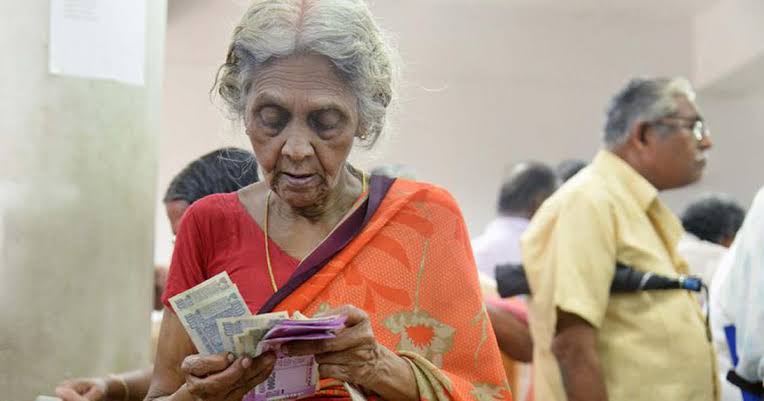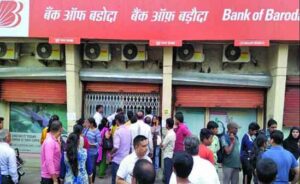The analysis on this case law is done by Ms. Sonika, a B.A.LL.B (Hons) student from Amity University, Lucknow.
IN THE SUPREME COURT OF INDIA
| NAME OF THE CASE | D.S. Nakara & Others v. Union of India |
| CITATION | (1983) 1 SCC 305 |
| DATE OF JUDGMENT | Dec 17, 1982 |
| PETITIONERS | D.S. Nakara and Others |
| RESPONDENT | Union of India |
| BENCH/JUDGE | Justice Y.V. Chandrachud, C.J.Justice V.D. TulzapurkarJustice D.A. DesaiJustice O. Chinnappa ReddyJustice Baharul Islam |
| STATUES/CONSTITUTION INVOLVED | Constitution of India |
| IMPORTANT SECTIONS/ARTICLES | Constitution of India- Articles 14, 39(e), 41, 43 |
Table of Contents
Abstract
In a Memorandum dated May 25, 1979, the Government of India liberalized the methodology for calculating pension in respect of employees regulated by the Central Civil Services (Pension) Rules, 1972, and made it applicable to the employees retiring on or after March 31, 1979. Another Memorandum published on September 23, 1979, extended the same to Armed Forces personnel retiring on or after April 1, 1979, with certain limitations.
Petitioners 1 and 2, who retired in 1972 from the Central Civil Service and the Armed Forces, respectively, and petitioner No. 3, a registered society advocating the cause of pensioners all over the country, challenged the legitimacy of the two memoranda as far as the liberalization in pension computation had been made applicable solely to those retiring on or after the date specified, and the benefit of liberalization had been denied to all those who retired before the date specified.1
Introduction
In modern parlance, a pension is a word used for the periodic money payments given to a person who quits at a particular age that is designated as the age of inability; payments normally continue for the remainder of the recipient’s natural life. Pensions are granted for a variety of reasons, which vary depending on a particular country and its system.
However, they are widely categorized as follows:
- compensation for former members of the armed services or their dependents due to old age, disability, or death (usually from service causes),
- As old-age retirement or disability benefits for civilian employees,
- Social security payments for the elderly, disabled, or deceased people paid in line with the laws regulating the country’s social service programs.
There are many types of pensions, as well as diverse means of supporting pension programs. The current investigation is confined to the non-contributory superannuation or retirement pension paid by the government to its former employees, as well as the aim and intent underlying it. This type of pension initially appears to have been offered as a reward for faithful service.2
In the course of society’s transformation from feudal to welfare, and as socialistic thinking gained respectability, the State’s obligation to offer security in old age and an escape from undeserved want was recognised, and pension was treated as a first step not only as a reward for past service but with the aim of assisting the employee to avoid destitution in old age. When the employee was physically and intellectually aware, he gave his best to the master, expecting him to look after him in the fall of life.
As a result, a retirement system exists exclusively to provide benefits. Everyone who qualifies for regular retirement receives the same amount under most retirement benefit schemes.3
Facts Of The Case
- The Central Government employees on retirement from their services are entitled to receive pension under the Central Civil Services (Pension) Rules, 1972.4
- In the previous pension scheme, the pension was related to the average emoluments for 36 months just before the retirement of the employee.5
- On May 25, 1979, the Government of India, Ministry of Finance, issued an Office Memorandum liberalizing the method for calculating pensions, but it was only valid for Government officials who were in service on March 31, 1979, and retired on or after that date. This pension formula will apply prospectively to government servants who retired on or after March 31, 1979, and with respect to defense personnel those who became ineffective on or after April 1, 1979. As a result, anyone who retired before the designated date would be ineligible for the benefits of the liberalized pension formula.
- The liberalized scheme established a slab system for calculating pensions, raised the pension maximum limit, and provided for average emoluments based on the previous ten months of service.
- Subsequently, the pensioners who retired before the stated period had to receive a pension based on the average emoluments of 36 months’ income just before the date of retirement. As a result, they faced a triple threat: reduced average emoluments, a lack of a slab system, and a lower limit.
- Following this the aggrieved petitioners filed the current writ petition in the Supreme Court, claiming that the memoranda violated Article 14 of the Constitution.
Issues Raised Before The Courts
- Whether the pensioners eligible for superannuation or a retirement pension create a class as a whole?6
- Whether the date of retirement is a significant component for eligibility when a revised formula for calculating pensions is implemented and becomes effective on a certain date?7
Arguments From The Petitioners Side
Learned counsel for the petitioners argued that under the relevant regulations, all the pensioners are entitled to receive pension from a class regardless of the dates of their retirement and that there can’t be a mini-classification within this class.
The preferential treatment given to people who retired before the designated date is a violation of Art. 14 of the Constitution.
Arguments From The Respondent Side
The respondent’s counsel argued that a categorization based on the date of retirement is acceptable for providing pensionary benefits and that the designated date is a crucial aspect of the liberalization program, and the government would never have enforced the scheme without it.
The learned counsel stated that the doctrine of severability cannot be invoked to remove the specified date from the scheme because doing so would enlarge the class of pensioners covered by the scheme.
The counsel also stated that when the legislature has expressly defined the class to which the legislation applies, enlarging the class would be outside the judicial function.
Related Provisions/Sections
Constitution of India
- Article 14: – Equality before law. — The State shall not deny to any person equality before the law or the equal protection of the laws within the territory of India.8
- Article 39(e): – that the health and strength of workers, men and women, and the tender age of children are not abused and that citizens are not forced by economic necessity to enter avocations unsuited to their age or strength;9
- Article 41: – Right to work, to education and to public assistance in certain cases. — The State shall, within the limits of its economic capacity and development, make effective provision for securing the right to work, to education and to public assistance in cases of unemployment, old age, sickness and disablement, and in other cases of undeserved want.10
- Article 43: – Living wage, etc., for workers. — The State shall endeavor to secure, by suitable legislation or economic organization or in any other way, to all workers, agricultural, industrial or otherwise, work, a living wage, conditions of work ensuring a decent standard of life and full enjoyment of leisure and social and cultural opportunities and, in particular, the State shall endeavor to promote cottage industries on an individual or co operative basis in rural areas.11
Judgment
The Supreme Court observed that when the State decided to liberalize the pension system in order to enhance social security for old age government employees, it could not provide the advantages of liberalization only to those who retired after the stated date and refuse the same to those who resigned before that date.
The division that distinguished pensioners into two classes based on their specific date of retirement is completely void of any rational principle and is both arbitrary and unscrupulous, being unrelated to the objective sought to be accomplished by granting liberalized pension.
It also violates the equal treatment guaranteed in Art. 14 of the Constitution as well as the pension rules, which were statutory in nature, meted out differential and discriminatory treatment to equals in the matter of calculation of pension from the dates specified in the challenged memorandum.12
As observed in the case of Maneka Gandhi v. Union of India13, and Ram Krishna Dalmia v. Justice S.R. Tendolkar14 . Article 14 prohibits class legislation; it does not prohibit fair categorization for legislative purposes. To pass the test of appropriate classification, two conditions must be met:
- The classification must be founded on an intelligible differentia that distinguishes those who are grouped together from those who are excluded from the group; and
- That differentia must have a rational relationship to the objects sought to be achieved by the statute in question. The classification may be established on a different basis depending on the goals desired, but the implication is that there must be a nexus, i.e., a causal link, between the basis of classification and the goal of the statute under consideration. It is likewise well established by the Supreme Court’s rulings that Art. 14 outlaws discrimination not only by substantive law but also by procedural law.15
Both of the disputed memorandums couldn’t effectively explain why the pension formula needed to be liberalized. According to the opposition’s affidavit, the administration chose to liberalize due to the constant demand of the employees represented in the plan of Joint Consultative Machinery. This would suggest that the pre-liberalised scheme didn’t provide appropriate old-age protection, and that further liberalization was required as a measure of economic security.
The government also took into account the fact that the constant rise in the cost of living index and the diminishing purchasing power of the rupee mandated an increase in pension. When the government replied positively to the demand, it implicitly recognised that there was a bigger accessible national cake, a portion of which might be used to provide more security to retiring employees. With this underlying liberalization intention, it cannot be claimed that it was just good enough for those who would retire after the stated period but not for those who had already retired.
The Court also observed that if all relevant considerations are similar, people holding identical positions cannot be treated differently in terms of compensation just because they work in different departments. If something cannot be done while they are in service, can it be done after they retire?
Extending on this concept, one may clearly state that if pensioners constitute a class, their calculation cannot be by separate formulas that provide uneven treatment only because some retired sooner and others retired later. The State is required under Art. 39 (e) to ensure that the health and strength of employees, men and women, and children of delicate age are not abused and that people are not pushed by economic necessity to engage in avocations that are unsuitable for their age or strength. Art. 41 mandates the state, within the limitations of its economic ability and development, to make appropriate provisions for safeguarding the right to work and education, as well as to offer help in circumstances of unemployment, old age, disease, disablement, and other cases of unjustified want. Art. 43 (3) requires the state to make every effort to provide complete enjoyment of leisure, as well as social and cultural possibilities.16
Conclusion
Thus, the dates and conditions stated in the memorandums are unlawful and were struck down with the requirement that the date specified therein will be relevant as the date from which the liberalized pension plan becomes operational. Leaving out the unconstitutional section, it was declared that all pensioners covered by the 1972 Rules and Army Pension Regulations are entitled to pensions calculated under the liberalized pension plan from the designated date, regardless of the date of retirement of the employees. Pension arrears previous to the stipulated date of new computation is not eligible.17
I agree with the decision taken by the Supreme Court. The horizons of socioeconomic justice are expanding and it is becoming necessary for the State to look after its underprivileged and destitute citizens. The retired employees are already dealing with low emoluments from when they retired, rising living prices, the falling value of the rupee, inflation, etc. Under such circumstances, the Supreme Court ruling in favor of the petitioners is a step in the right direction as it will encourage the disadvantaged citizens to fight for their rights and believe that the law will protect them.
Reference Links
1.LatestLaws.com,https://www.latestlaws.com/latest-caselaw/1982/december/1982-latest-caselaw-103-sc (Last visited Aug. 6, 2022).
2. Indian Kanoon, https://indiankanoon.org/doc/1416283/ (Last visited Aug. 4, 2022).
3. Id.
4. (1983) 1 SCC 305.
5. Id.
6. 1983 SCC (L&S) 145 at page 311.
7. Id.
8. INDIA CONST. art. 14.
9. INDIA CONST. art. 39, cl. e.
10. INDIA CONST. art. 41.
11. INDIA CONST. art. 43.
12. Supra note 2.
13. Maneka Gandhi v. Union of India, (1978) 1 SCC 248.
14. Ram Krishna Dalmia v. Justice S.R. Tendolkar, AIR 1958 SC 538.
15. Supra Note 3.
16. Id.
17. Id.



